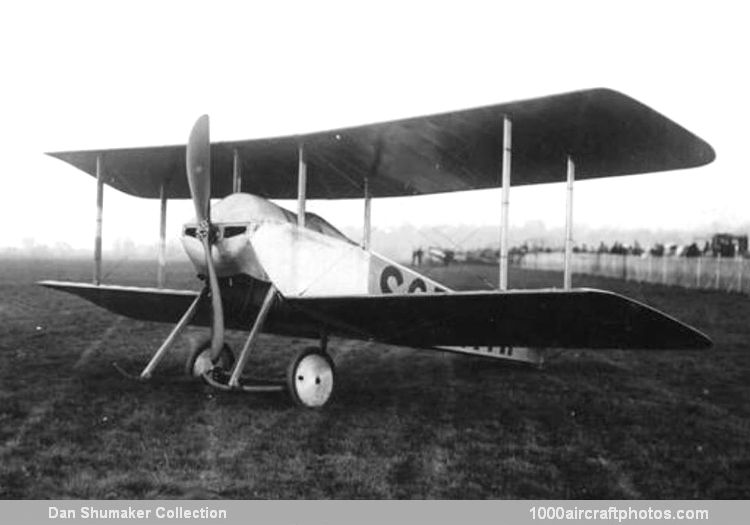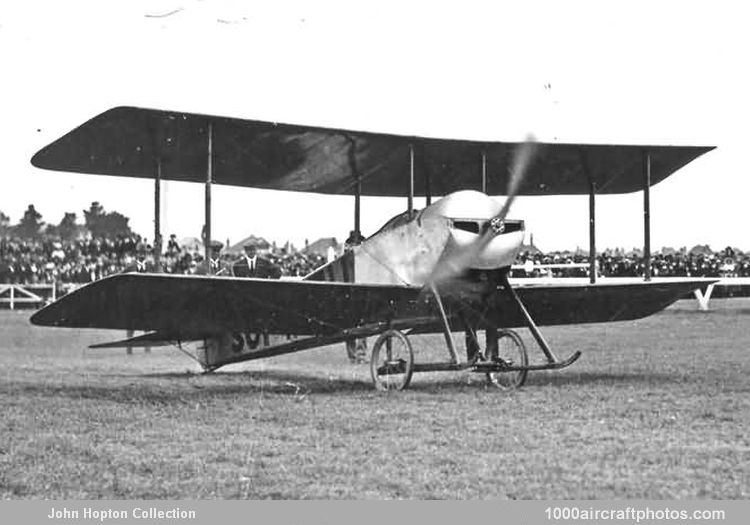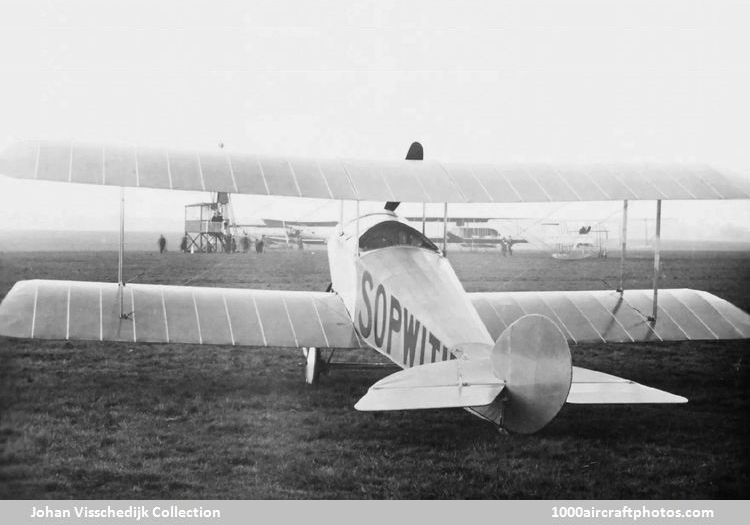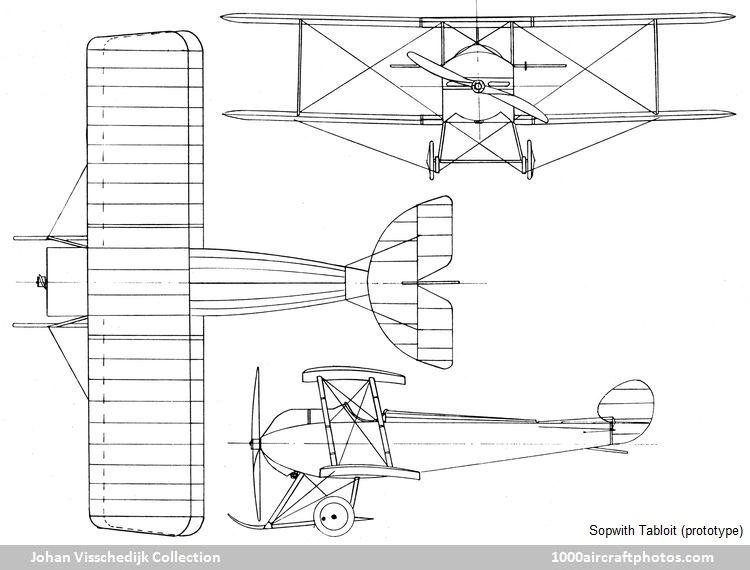12/31/2023. Remarks by
Johan Visschedijk: "Following the current trend of attempts to produce small fast tractor biplane scouts, T.O.M. Sopwith and F. Sigrist embodied their own ideas in the Tabloid, which was built in secret for racing and demonstration by their test pilot, H.G. Hawker, who also made some contribution at the design stage.
First trials wooden structure, fabric covered aircraft were made during the autumn of 1913 at Brooklands and, upon completion, they were followed by official tests at Farnborough on November 29. These disclosed that the Tabloid, with an 80 hp Gnome rotary engine, possessed the unusually wide speed-range of 55.l mph (88.7 kmh): steadily flight at as low a speed of 36.9 mls (59.4 kmh), and a max. speed of 92 mph (148 kmh). Later the same day, Hawker flew the machine from Farnborough to Hendon, arriving over the aerodrome while one of the popular Saturday meetings was in progress. He showed the new Sopwith off to the competitors and 50,000 spectators by completing two low, fast circuits of the field at 90 mph (145 kmh).
Tabloid pototype in Australia (
John Hopton Memorial Collection)
The two-seat prototype was scheduled to appear at the 1914 Paris Aero Show, but, instead, Hawker took the machine on demonstration to his native Australia in an effort to arouse the Government's interest in the type. While it was away, the Tabloid was modified and, on its return to England on June 6, 1914, was seen to have had the fabric of the rear fuselage removed and a new undercarriage with simple V-struts fitted.
Tabloid prototype without a fin (
Johan Visschedijk Collection)
The original machine was built without a fin (in fact the rudder was also the vertical stabilizer), and the single cockpit housed its two occupants side-by-side, the pilot was seated on the left.
Early in 1914 the Tabloid was put into production as a single-seat scout for both the Military and Naval Wings of the RFC. The length of the production version was increased by 4 in (10.2 cm) to become 20 ft 4 in (6.20 m); a fin was added to the tail unit and ailerons replaced wing-warping.
A special single-seat Tabloid was prepared to represent Great Britain for the first time in the Schneider Trophy contest due to be held at Monaco, France on April 20, 1914. The race was for seaplanes, and a single wide central float was built for the machine, which was powered by the latest type of 100 hp Monosoupape Gnome.
C. Howard Pixton was chosen to fly the Schneider Tabloid, but, on taxying out at Ramble for testing, the machine turned over in the water, and it was returned to the Kingston works. Twin floats were then quickly made by adopting the simple expedient of cutting the original large float down the center line.
After test-flying from the River Thames on April 8 the Schneider contender was sent straightaway to Monaco. In France minor modifications were made, and a new propeller was fitted on April 19 to good effect, as on the following day, Pixton triumphed over the hitherto superior French pilots and aircraft and became the first to win the Schneider Trophy for Great Britain. The tiny seaplane covered the 300 km (186.4 mls) course in 2 hr 9 min 10 sec at an average speed of 86.75 mph (139.61 kmh), and capped this fine performance by continuing around the course for two extra laps at 92 mph (148 kmh) to set up a new world speed record for seaplanes.
On its return to England the victorious Tabloid was converted at Kingston to a landplane with a V-strut undercarriage and was prepared for R.H. Barnwell to fly it in the 1914 Aerial Derby. On the day of the contest, however, bad visibility forced Barnwell to abandon the race, and thereafter the Tabloid design demonstrated its prowess by carrying out scouting missions for the RFC and RNAS during the opening months of WW I.



